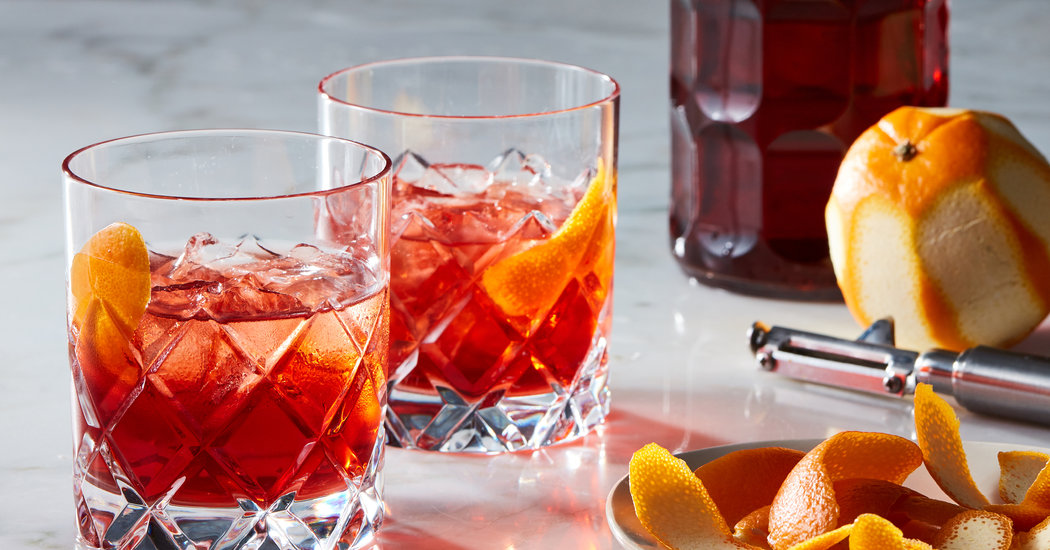
Home bartenders aren’t often stuck in high-volume situations. But combine guests in dry-clean-only clothes with social anxiety and suddenly you’re hosting a holiday party, and frantically making drinks for a horde.
Instead of spending the night juggling sticky shakers and unfinished conversations, or relying on assorted beers from a bathtub filled with ice, welcome guests with a martini — deeply chilled and dirtied to personal preference — or a heavy-on-the-rye Boulevardier, with nary a shaker or stirrer in sight.
Designed to be mixed in big batches well before the doorbell rings, these cocktails are the key to making drinks en masse more fun and less stressful.
“A batch cocktail relaxes everyone,” said Maggie Hoffman, the author of the cookbook “Batch Cocktails: Make-Ahead Pitcher Drinks for Every Occasion.”
Purists may — and have — scoffed at premixing classic cocktails, but that argument tracks only when you’re paying for the drinks, the service and the show. At home, the vibe is different, Ms. Hoffman said: “You have a party to spend time with people, not to show off how good your stirring skills are.”
Batch cocktails, which can be chilled for days, if not weeks, allow hosts to seamlessly transfer their drink-making anxieties to other concerns, like whether your crush is going to show or the roast is overcooked.
Not a hosts-only trick, batch drinks are also portable and make a welcome gift: Bring one to the next house party you attend to relieve a harried pal. Better yet, slip it into the refrigerator to be discovered later as a day-after hair of the dog.
While many drinks are amenable to batching, stirred-styled drinks that don’t require last-minute fussing tend to work best. If you do choose to serve something with citrus or other fresh ingredients, leave them out of the batched drink, and then add about an hour or so before serving.
Another crucial and often overlooked ingredient is water.
“When a bartender is stirring or shaking a drink, they are chilling that drink to the optimal temperature, but they are also diluting it to the optimal dilution,” Ms. Hoffman said. “By adding water, you’re not only balancing the strength of the alcohol, you’re also balancing the sweetness.”
Different drinks and palates can handle varying amounts of dilution at the time of mixing, but a general rule is to add between a half-ounce and three-quarters of an ounce of water per drink for cocktails without ice, and between a quarter-ounce and a half-ounce of water per drink for cocktails served over ice. When you’re adding water, choose something you would drink on its own, be it tap, filtered or bottled (preferably glass, both for taste and environmental reasons).
Store the batches in tightly sealed bottles or jars in the refrigerator. If you’re making them more than two weeks in advance, leave out the water until the day you plan to serve them.
Game time setup depends on your party space. Be sure to have enough drinks for everyone, and pay attention to temperature. Keep prebatched, prechilled bottles or pitchers cold in buckets of ice (that ice-filled bathtub works, too) or store backup bottles in the refrigerator for easy and frequent refreshes throughout the night. Keep ice out for guests who may prefer more dilution. Post a note on or near the bottles to let guests know what they’re drinking.
Finally, breathe deep, relinquish control, set out an array of garnishes, and allow your guests the pleasure of finishing — or if martinis are involved, dirtying — their own.
Recipes: Batched Boulevardier | Batched 50/50 Martini




